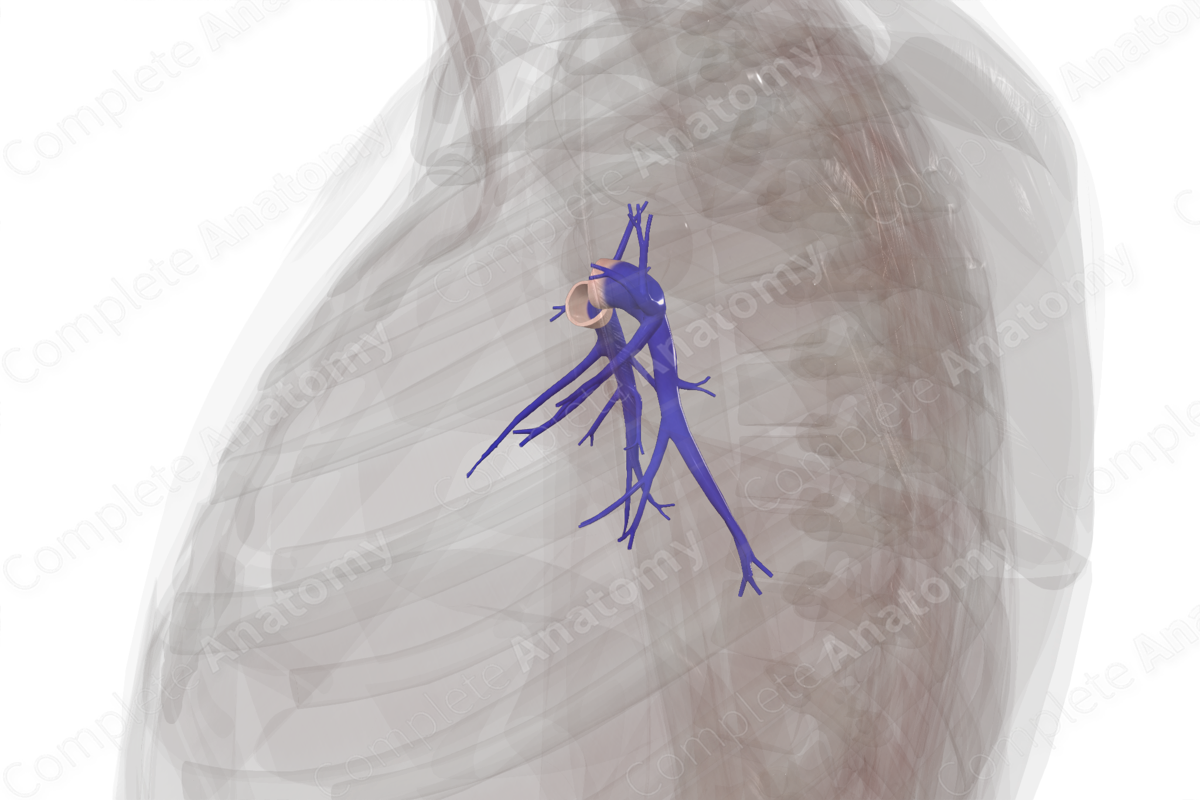
Description
The pulmonary arteries carry deoxygenated blood from the right ventricle to the lungs, where they eventually form and extensive network of pulmonary capillaries which undergo gaseous exchange. The newly oxygenated blood returns to the left atrium of the heart via four pulmonary veins.
The deoxygenated blood exits the right ventricle through the pulmonary trunk, which divides at the level of the fifth thoracic vertebra, inferior to the arch of the aorta, and forms the right and left pulmonary arteries. These arteries travel laterally towards the hilum of their respective lungs. Due to the position of the pulmonary trunk, the right pulmonary artery must travel a longer distance to reach the hilum of the right lung.
The right pulmonary artery enters the right lung at the hilum. It gives off a branch for the superior lobe and its terminal bifurcation gives off the middle lobar and inferior lobar branches. The left pulmonary artery bifurcates into the superior and inferior lobar arteries of the left lung to supply the inferior and superior lobes of the left lung respectively. All lobar branches follow the branches of the bronchial tree and continue to branch into segmental arteries that supply each lung segment.
The bronchial arteries are branches of the systemic circulation and supply the lung tissue itself. They are not to be confused with the pulmonary arteries.
Related parts of the anatomy
Learn more about this topic from other Elsevier products





